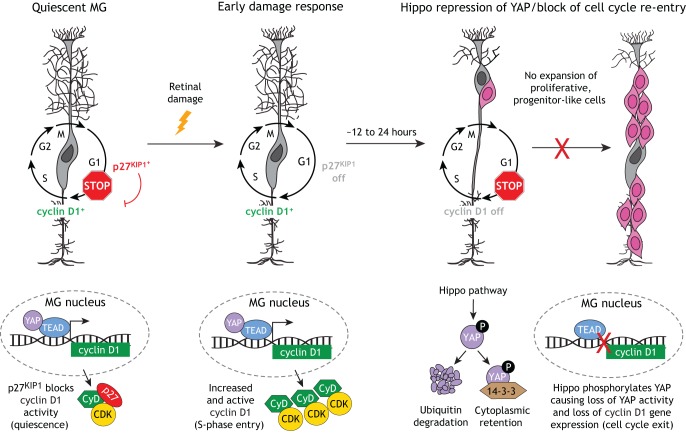Fig. 2.
The Hippo pathway acts as an endogenous block to sustained mammalian MG proliferation and reprogramming. MG normally express low levels of the S phase-promoting protein cyclin D1 (CyD), which is a direct transcriptional target of YAP/TEAD. However, due to co-expression of the cyclin kinase inhibitor p27KIP1, cyclin D1 activity is repressed and MG are kept in a quiescent state. Upon retinal damage, p27KIP1 expression is lost coincident with upregulation of cyclin D1 expression and activity, which triggers MG to enter the S phase. However, over an additional 12-24 h, the MG exit the cell cycle and are prevented from expanding clonally into a proliferative, progenitor-like population. This block in MG cell cycle re-entry is due to Hippo pathway-mediated phosphorylation of YAP, which leads to YAP cytoplasmic retention or ubiquitin degradation. As a consequence, YAP is kept out of the nucleus and cyclin D1 is not expressed in MG.

